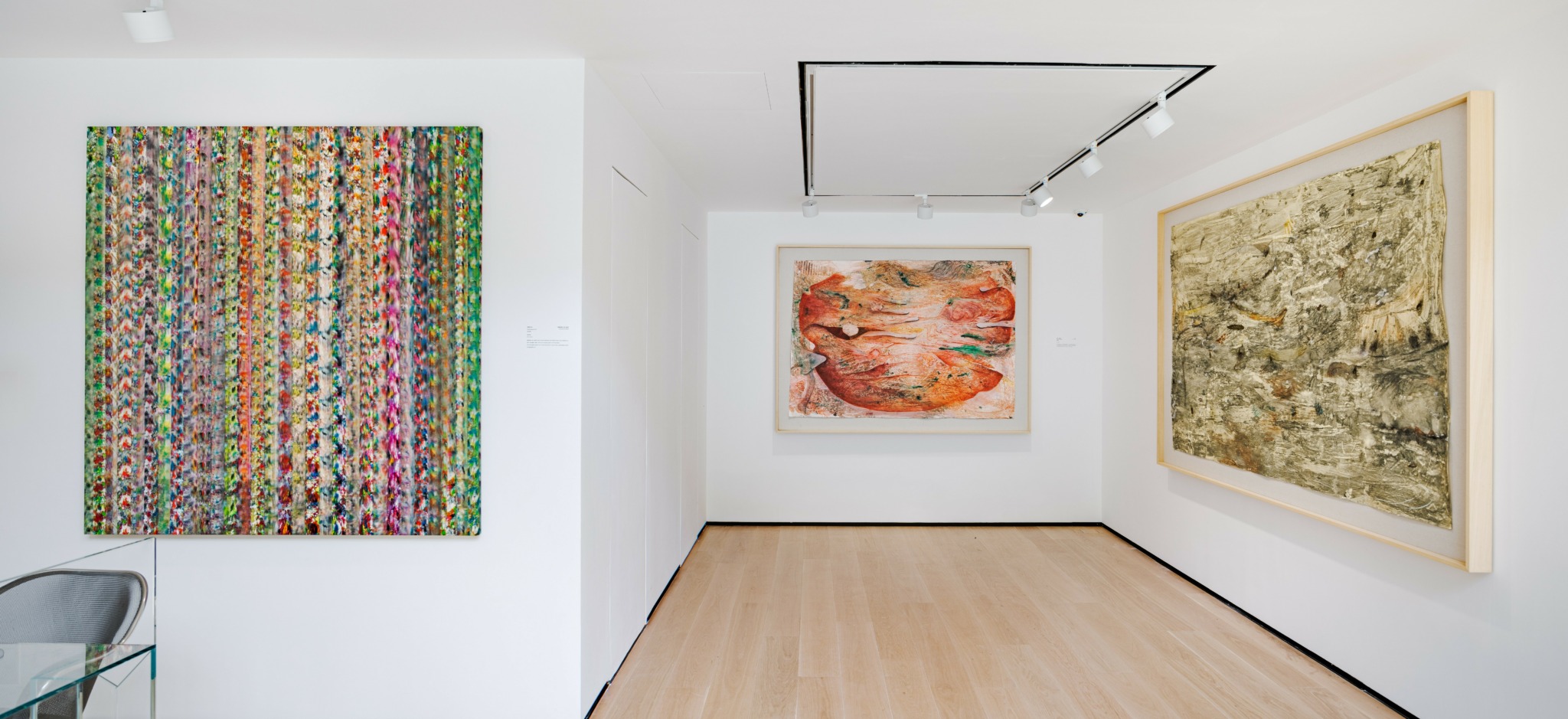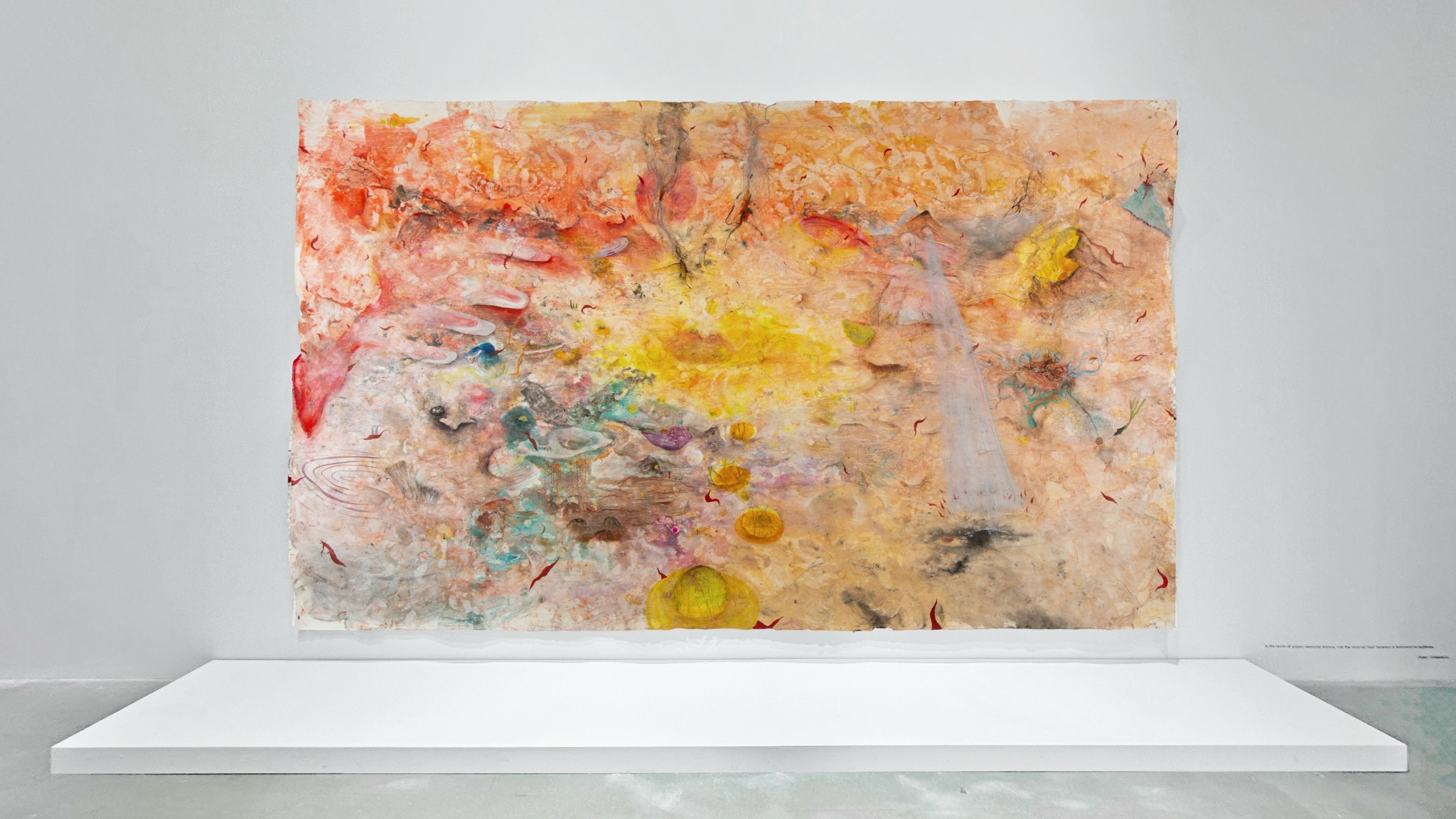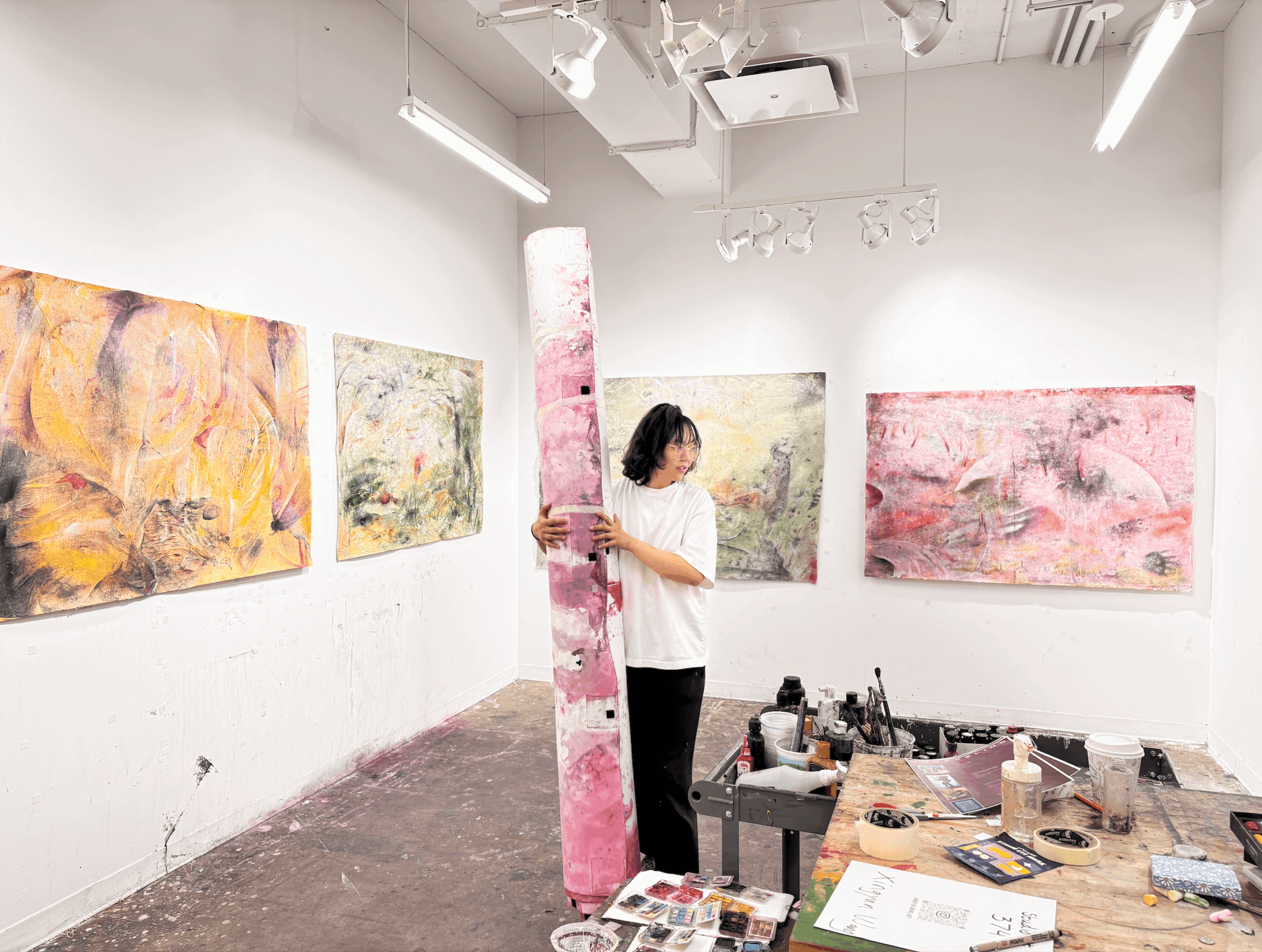Alright – so today we’ve got the honor of introducing you to Xingyun Wang. We think you’ll enjoy our conversation, we’ve shared it below.
Xingyun, thanks for joining us, excited to have you contributing your stories and insights. Are you happy as a creative professional? Do you sometimes wonder what it would be like to work for someone else?
Happiness as an artist is complicated—it’s not the carefree kind, but a deeper fulfillment tied to discovery, persistence, and the joy of making. Yet there are times I wonder what it would be like to have a more predictable, stable job. The last time I had that thought was while preparing to ship several large works for an exhibition.
Being an artist involves far more than just time spent painting in the studio. There’s constant preparation, cleaning, organizing materials, planning for exhibitions, and administrative work that often feels endless. Shipping artwork internationally, in particular, is always a challenge. What I thought would take a day or two of packing stretched into more than a week because of the complexities involved in protecting delicate paper works and navigating unfamiliar shipping policies—things I’ve had to learn through trial and error.
There were countless calls and emails with the shipping company and gallery coordinators. Instead of painting, I spent hours on the phone arranging pickups, aligning schedules, and filling out paperwork. At one point, I found myself sitting in my studio, staring at the unfinished paintings I hadn’t touched all week, thinking, “What if I just had a regular 9-to-5?” A job where I could clock out at the end of the day and leave everything behind.
But that thought didn’t last long. I began picturing the moment the works would arrive safely at the gallery, how they would be installed, and the excitement I’d feel seeing them come to life in a new space. That’s when it hit me—every part of this labor, from packing to paperwork, is part of the creative process. People usually only see the final artwork, but behind each piece lies a journey—research, preparation, failed attempts, packing, shipping, and constant communication.
These hidden aspects aren’t always glamorous, but they’re essential to bringing the work into the world. And in the end, it’s worth it. The unpredictability, while frustrating at times, keeps things exciting. Even when the tasks feel overwhelming, I wouldn’t trade this life for anything else. The joy of seeing my art come alive in new places always reminds me why I chose this path—because art, like life, is messy, unpredictable, and ultimately very much worth it.


Xingyun, before we move on to more of these sorts of questions, can you take some time to bring our readers up to speed on you and what you do?
I am an artist working with paper, creating layered compositions using pigmented glue and other water-based materials. My practice is deeply rooted in process, materiality, and storytelling. For me, paper is not merely a surface to paint on—it serves as a metaphor for resilience. It is both delicate and durable, capable of holding traces of every tear, cut, and repair. Working on the floor, I move the paper while it’s wet, allowing the glue to flow and settle unpredictably, engaging in a tactile, bodily conversation with the material. Thin sheets of tissue interact with heavier watercolor paper, forming semi-opaque layers that resemble fragmented landscapes.
What distinguishes my work is how it weaves together fragility and endurance. As I build these layered surfaces, I deliberately leave visible signs of the process—paint drips, perforations, sanded areas that barely cling to the surface, embedded strands of hair, and shimmering glass flakes. These elements introduce tension between vulnerability and resistance, encouraging viewers to explore the traces of destruction and quiet resilience woven throughout the work.
The themes in my art are deeply personal. Growing up as a queer woman in environments where queerness had to be hidden, I often encountered fear and helplessness. Painting became a way for me to document those emotions and build something beyond them. My use of paper reflects that journey—its adaptability mirrors my search for resistance and survival. It is a material that remembers: even after being torn, sanded, or punctured, it preserves a record of everything that came before, much like memory itself.
At its core, my work embodies both rupture and healing. Every piece undergoes a process of layering, erasing, and rebuilding—a metaphor for the complexities of human experience. Through these textured surfaces, I aim to create spaces where viewers can encounter both vulnerability and strength, finding meaning within the process itself.
Whether exhibited in galleries, installations, or shared online, my work invites connection through these layered, quiet stories. It offers glimpses of both personal and universal resilience. Ultimately, my art reflects the belief that even in fragile materials, there is an enduring capacity to transform, endure, and remember.


Have you ever had to pivot?
The COVID-19 pandemic was a turning point in my career that forced me to pivot both my practice and perspective. Before the pandemic, I primarily worked on larger canvases with traditional painting techniques. However, when lockdowns began, I faced immediate challenges—access to materials was limited, and my living space shrank down to the confines of my small apartment. The physical and mental constraints pushed me to rethink my approach.
Without the room to work on large canvases, I started experimenting with paper, a material that was more accessible and adaptable to my situation. Initially, it felt like a compromise, but soon, it became an exploration that changed my practice entirely. I discovered that assembling smaller pieces of paper into a larger sheet made the work more fluid and engaging. This process allowed for a tactile, almost sculptural interaction that I hadn’t experienced before. The adaptability of paper mirrored my own need for resilience during an uncertain time, and it soon became central to my work.
This pivot wasn’t just a change in medium; it was a shift in how I thought about art. I realized that paper could carry just as much weight as canvas. It recorded every mark, tear, and layer, becoming a metaphor for memory and transformation. The restrictions of that time forced me to innovate, and the result was a deeper, more personal body of work that resonated with my journey and experiences.
The pandemic was an immense challenge, but it led to a breakthrough in my art. What started as a necessity became a center of my practice, enabling me to explore themes of fragility, endurance, and resilience in new ways. Looking back, I see that this pivot wasn’t just a response to circumstances but an evolution that set the stage for where I am today.


What’s the most rewarding aspect of being a creative in your experience?
For me, the most rewarding aspect of being an artist is creating work that resonates emotionally with others while reflecting the complexities of my own journey. The process of layering, sanding, and reconstructing paper allows me to infuse my art with narratives of resilience and transformation. Seeing people connect with my work and draw their own interpretations is what makes the effort worthwhile. There are subtle details in my work—some people might see a mountain, while others see a face—and these varied readings are deeply rewarding for me. My work is personal, yet when viewers engage with the work and find their own meanings within the textures and details, it becomes a shared experience that transcends words.
Contact Info:
- Website: https://www.xingyunwang.net
- Instagram: @xingyun_wang_art
- Other: email: [email protected]


Image Credits
Photo 1 and photo 7 credit to Zian Gallery
Photo 2, 3, 4 credit to Brownie Project Gallery
Photo 5, 6 credit to Shanghai Bund Art Center


